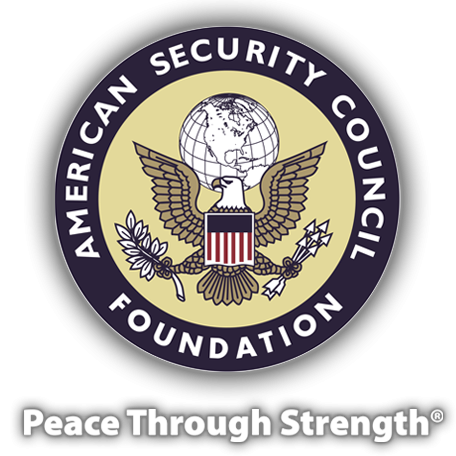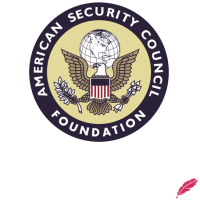An In-Depth look at China's Footprint in the Bahamas. Edited April 30th, 2021
By Joy Votrobek, Sr. Research Analyst,
American Security Council Foundation
Edited April 30, 2021
Edited to correct the founder of Grand Bahama and update China’s control in Freeport Harbor.
Abstract:
This paper will look at the timeline of Chinese infrastructure projects in comparison with Bahamian political parties and their policies. The article will explore China’s economic and political coercion through a “gifted” sports stadium followed by loans for questionable infrastructure programs. It will question the need for the North Abaco port as well as the Nassau Gateway Airport project. The paper will conclude with a short analysis of China’s three-fold agenda for the Bahamas
Timeline of Chinese infrastructure projects and Political Parties:
1953 – The Progressive Liberal Party (PLP) was formed in opposition to British rule. It was the first political party for Bahamian’s of African descent.
1955 – The Hawksbill Creek Agreement (HCA) between the Bahamian government and Wallace Groves, founder of Grand Bahama Port Authority (GBPA).
1958 – The United Bahamian Party (UBP), politicians of British descent, was formed to counter the PLP.
1972 – The Freedom National Movement (FNM) party was formed to oppose the PLP. Some FNM members were those from the UBP and anti-PLP members.
1973 – The Commonwealth of the Bahamas won its independence from Great Britain.
1992 – In August 1992, the FNM party came into power.
1997 – The FMN party won significant majority control of the government under Ingraham.
NOTE: The Bahamas had diplomatic relations with Taiwan before switching to Beijing in 1997.
1997 – Hong Kong-based Hutchison Port Holdings (HPH) opened the Freeport Container Port after pouring in $2.6 billion.
2002 – PM Perry Christie, a member of the PLP, took office.
2007 – The FMN regained control of the government under Ingraham.
2009 – China’s Shandong Hi Company started construction of the Thomas Robinson Stadium.
2010 – China Construction America (CCA) began to develop the Nassau Airport Gateway, costing $67 million, funded by China’s Export-Import Bank (EXIM).
2011 – The $30 million Thomas Robinson Stadium was completed and given as a “gift” to the Bahamas.
2011 – China’s EXIM bank provided a $2.45 billion loan for Baha Mar resort.
June 2011 – The Democratic National Alliance Party (DNA) requested the FNM to produce public records of communist China’s contributions to the party.
November 2011 – The Bahamas Press reports that Chinese commercial fishers were fishing off Andros Island.
2012 – The PLP gained the power of the Bahamian government.
2014 – The China Harbour Engineering Company (CHEC) began construction on a port in North Abaco, costing $39 million. The project was completed in January 2017.
2016 – Aliv, a telecommunications company, opened in the Bahamas. Technology partner Huawei financed $30 million to Aliv.
2016 – China is working with the Bahamian government to secure commercial fishing licenses and rights to fish 10,000 acres of Andros Island for ten years.
November 2016 – Edison Key, Executive Chairman of the Bahamas Agricultural and Industrial Corporation (BAIC), approved the Chinese fishing agreement. He is a member of the FNM.
November 2016 – Commercial fishing deal with China died due to the outcry from both the U.S. and the Bahamians.
2017 – The FNM won the general elections, and Hubert Minnis became the new prime minister.
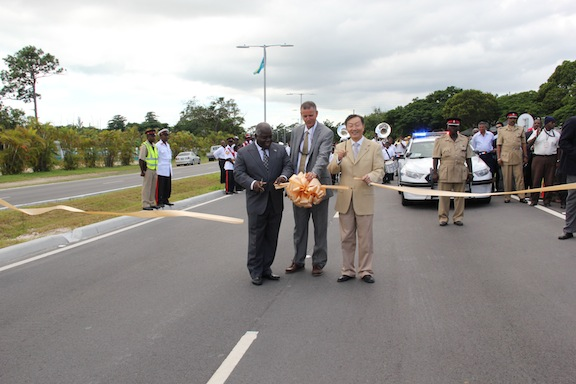
China, Freeport, and Bahamian political parties.
The Free National Movement (FNM) Party was in power in 1997 when the Bahamas terminated diplomatic ties with Taiwan and recognized Beijing’s “one-China” policy. That same year Hong Kong’s Hutchison Whampoa Limited HWL opened the Freeport Container Port (FCP) after pouring $2.6 billion into the project. Freeport Container Port is privately owned and operated by Hutchison Port Holdings (HPH).
However, negotiating with HWL started much earlier than 1997. In 1994, with the FNM in power, Edward St. George, an investor in Freeports’ Grand Bahama Development Company, convinced HWL to purchase a 50% interest in Freeport Harbour. HWL wanted a container port in Freeport because of its proximity to the American East Coast and the Panama Canal. However, this would require HWL to expand and modernize a port large enough to entertain cargo shipments from Panama and elsewhere. Hutchison is a Hong Kong-based conglomerate with ties to Beijing. Hutchison Whampoa, Ltd (HWL), Hutchison Port Holdings (HPH), and Hutchison Development Bahamas, Ltd. all fall under C.K. Hutchison, owned by Hong Kong billionaire Li Ka-Shing. Li Ka-Shing reportedly has ties to Beijing and the People’s Liberation Army (PLA).
History of Freeport.
In 1955, Wallace Groves, an American who operated a lumber company on Grand Bahama, negotiated the Hawksbill Creek Agreement with the Bahamian government. The Hawksbill Creek Agreement gave Groves land on Grand Bahama to develop and manage as an industrial town, which would become known as Freeport. The agreement also required the dredging of a deepwater harbor. The Hawksbill Creek Agreement made Freeport a special free trade zone guaranteed through 2054. Groves created the Grand Bahama Port Authority (GBPA) to manage and drive this development. The GBPA had to find investment capital from private investors to implement such a project.
In 1968, Groves took the GBPA public, and the Inter-Continental Diversified Corp (ICD) bought up controlling shares of the GBPA. In 1978, Groves sold the remainder of his shares in ICD to Jack Hayward, a wealthy British financier, and Hayward’s partner Edward St. George. Both St. George and Hayward sat on the ICD Board as President and Vice-President, respectively. St. George and Hayward would eventually reconstruct the GBPA, placing all the commercial assets under a separate entity called the Port Group Limited (PGL). The GBPA, owned by the shareholders of ICD, is now only a regulatory authority for the Port Area. PGL entered into other joint ventures with C.K. Hutchison, including Grand Bahama Development Company, Freeport Harbour Company, Ltd, and Grand Bahama International Airport. Hutchison manages the Freeport Harbour Company, Ltd.
Chinese Infrastructure projects and Bahamian political parties.
Two years before the Hawksbill Creek Agreement, the Progressive Liberal Party (PLP) opposed the ruling British government. The PLP wanted stricter government control and more Bahamian-owned businesses, but they did not have the majority in the House to stop the Hawksbill Creek Agreement. The PLP finally had the majority in the House to wield power in 1967 and maintained control through Bahamian independence in 1973.
The FNM did not come into existence until 1972. Unlike the PLP, the FNM policy platform was to attract more foreign investments. In 1997 the FNM increased its majority of seats in the House, wielding even more power. That same year the Bahamas would choose Beijing over Taiwan, and Hutchison opened the Freeport Container Port (FCP).
A good portion of China's foreign direct investments came while the FNM was in office. Unlike the PLP, which had advocated for stricter government controls, the FNM policy opened the Bahamas to foreign investors. This policy, coupled with the FNM’s acceptance of the “one-China,” policy was an opportunity for China to flex its political and economic coercion. The FNM lost to the PLP in 2002 but regained control of the government again in 2007. Two years later, in 2009, China’s Shandong Hi Company constructed the Thomas Robinson stadium. Bahamian officials told the New York Times that the $30 million “gifted” stadium was in part due to ending their diplomatic ties with Taiwan. The stadium marked the beginning of the Chinese footprint becoming more rooted in the Bahamas.
Ever since the FNM’s recognition of the “one-China“ policy to attract foreign investment, Chinese bankers and construction companies have been loaning money and constructing dubious infrastructure projects. In 2010, the Nassau Airport Gateway project got underway, financed by China’s Export-Import Bank (EXIM) and built by China Construction America (CCA). CCA is a Chinese state-owned (SEO) enterprise based in the U.S In 2011, China’s EXIM bank provided a $2.45 billion loan for Baha Mar resort to a private investor, who went bankrupt. Baha Mar missed several opening dates and became a ghost town until 2016 when Hong Kong conglomerate Chow Tai Food Enterprises took control and now operates Baha Mar. Baha Mar is the largest resort and casino in the Caribbean. CCA also bought the British Colonial Hilton in Nassau and poured in $200 million to construct another high-end resort called The Pointe.
Debatable loans and commercial fishing rights questioned.
With the consistent investments and infrastructure projects, the Democratic National Alliance (DNA) party requested that the FNM produce public records of communist China’s contributions to the party. Not all Bahamian’s are happy about the cost of China’s footprint on their island paradise. In November 2011, the Chinese were caught commercial fishing off Andros Island. The Bahamas’ Press questioned who approved the commercial fishing license for the Chinese. The FNM lost control of the government to the Progressive Liberal Party (PLP) in 2012.
Progressive Liberal Party (PLP) keeps Chinese loans.
In 2014, the PLP, led by PM Perry Christie, agreed to let China Harbour Engineering Company (CHEC) begin construction on a port in North Abaco. The EXIM Bank of China and the Government of the Bahamas funded the North Abaco Port. The EXIM bank loan for the port cost $33 million, plus an additional $8 million for the Little Abaco bridge and infrastructure. Christie also opened the country’s telecommunications up to competitors to keep prices lower. In 2016, Aliv would open a telecommunication company with its technology partner, Huawei, who invested $30 million in its start-up. In 2016, the PLP also gave China the green light to proceed with a ten-year commercial fishing agreement off Andros Island. There was such an outcry from the Bahamian people and the U.S. that the Bahamian government had to kill the commercial fishing agreement with China. The FMN party regained power in 2017, led by PM Hubert Minnis. In 2018, The Nassau Guardian suggested that the Bahamas would continue to deepen cooperation between the Bahamas and China. There is now an agreement for a direct flight from China to the Bahamas.
How much is the Bahamian government ready to offer for their own “Freeport”?
In the aftermath of Hurricane Dorian in September 2019, Marsh Harbor sustained massive damage as well as the rest of the Abaco Island chain. The Bahamian government said they are working hard to clean up the North Abaco Port to meet International Standards. Why do the Bahamas need another international deep water port so close to Freeport? The answer could be that the Bahamian government hopes the North Abaco port can be a revenue-making container port benefiting the Bahamians instead of foreign investors. The Bahamian government makes for little money off Freeport since Hutchison is in joint ventures with PGL. St. George and Hayward families own PGL. Freeport Container Port is privately owned and operated by Hutchison Port Holdings. Freeport Container Port (FCP) brings in $27 million in revenue. The Bahamian government only appears to make revenue in Freeport off licensing and permitting fees from the GBPA.
Would North Abaco Port be competitive in the Caribbean?
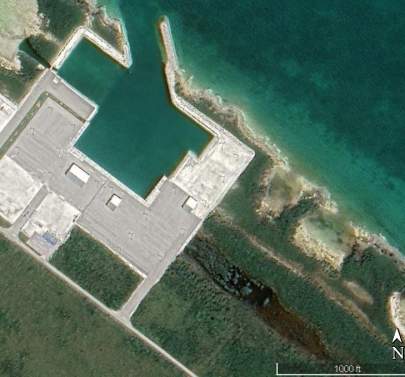
For the North Abaco Port to sustain itself, it will have to attract commercial traffic, but the current channel is too shallow for large cargo ships. The Abaco officials believe if the port is made into a “free trade zone” like Freeport, it will help spur more traffic and investments. For North Abaco to become a crucial hub, additional money is needed to dredge a deeper channel to accommodate heavy maritime traffic. The figure is expected to be around $8 million to complete the dredging project and likely will come from foreign direct investment since the local government does not have the budget.
Freeport is only 66 nautical miles away from North Abaco and has an existing “free trade zone” as well as an 88-acre deep-sea modern container port. Is it feasible to have another commercial hub so close to Freeport? The Freeport Container Port (FCP) is one of the most modern and efficient container ports in the world and is managed by Hutchison Port Holdings (HPH). HPH controls 15% of the world’s shipping, running 52 ports in 27 countries. Hutchinson operates ports at both ends of the Panama canal, four ports in Mexico, one in Argentina, and one in Quebec, Canada, making Freeport a key hub for numerous ships transiting through the Panama Canal, either going North and South or East and West.
Freeport is also vital for unflagged ships wishing to deliver cargo from one American port to another. The Jones Act, otherwise known as the Merchant Marine Act of 1920, requires all goods transported by water between U.S. ports to be U.S. flagged ships, constructed in the U.S., owned and crewed by U.S. citizens. This law makes Freeport a transshipment hub for the United States East Coast and non-flagged U.S. ships or those not meeting the Jones Act rules.
The North Abaco port has the potential as a transshipment hub but will require deep water dredging and modernization to compete with Freeport. It could be another hub for ships going further into the U.S. or Canada and transiting East and West from Europe and Africa.
While the Bahamian government wants to bring North Abaco port up to International Standards, it appears the government is also busy updating Nassau’s Cruise port. In August 2019, the Bahamian government signed a $250 million contract with Global Port Holdings, Bahamas Investment Fund, and the Yes Foundation to modernize the Nassau Cruise Port and revitalize downtown Nassau. The Nassau cruise port completion date was 2022; however, Hurricane Dorian and the ongoing COVID-19 pandemic may slow progress. Hurricane Dorian ravaged the Abaco Islands and Freeport in 2019. North Abaco port expansion funds will likely be on hold until the government can restore infrastructure to businesses and residents. North Abaco port has a long way to go to be competitive with Freeport and the rest of the Caribbean. The Bahamian government likely sees the need for their stake in revenue-making cruise and container ports.
Is there enough justification for Chinese infrastructure and loans?
The Bahamas rely on tourism and the banking industry for their primary gross domestic product (GDP). They do quite a bit of both, but is it enough to justify all of China’s new infrastructure and resorts? The Nassau Gateway Airport loan cost $67 million. According to a top rating company report, the Nassau Gateway Airport has a negative outlook for 2020. The Bahamian government does not agree with this rating since it had such a positive 2019. However, due to the negative rating, Nassau Airport Development has had to increase its debt reserve. The increase in debt reserve may constrain the government’s ability to pay down the $8 billion they have already accumulated in debt. $99 million of that debt was owed to China’s EXIM Bank for the Airport and North Abaco port infrastructure. The Bahamian government has paid down foreign loans over the years, but total foreign loans still owing are at $67 million, according to the Bahamas Fiscal Snapshot Report for FY 2019 / FY 2020.
China’s track record and security concerns.
China does not appear to care about the feasibility of a project for a country like the Bahamas. While the Chinese projects are impressive, they tend to be a debatable need for some nation-states. The concern is whether or not the Bahamian infrastructure loans will turn into another underutilized Hambantota, Sri Lanka. In Hambantota, the Chinese built a whole new city consisting of a deep seaport, an industrial zone, a natural gas plant, a stadium, a conference center, a tourism area, and an airport. The cost of such excessive projects was not feasible for the amount of traffic that Sri Lanka attracts. Therefore Sri Lanka could not keep up with loan payments to China, and now China enjoys 70% of the equity and a ninety-nine-year lease in the Hambantota project. The People’s Liberation Army Navy (PLAN) vessels have already paid a visit to the Hambantota port. China has a track record of taking payment in resources or persuading joint ventures when countries can not repay loans. Hutchison saw an opportunity in Freeport and continued to buy up joint ventures with the PGL, increasing a Chinese footprint on the island of Grand Bahama. The Bahamian government will hope to avoid the same problem with other Chinese-financed projects.
Security Concerns for the United States.
Freeport Container Port (FCP) was financed and built mainly by Hutchinson in a joint venture with PGL, and now FCP is managed by Hutchinson. HWL, HPH, and Hutchison Development Bahamas, Ltd. all fall under C.K. Hutchison, owned by Hong Kong billionaire Li Ka-Shing. China’s People’s Liberation Party Navy uses the China Ocean Shipping Company (COSCO) to ship military supplies.
Hutchison has already modernized Freeport with technological innovations, and it may be only a matter of time until Freeport becomes a 5G smart port. COSCO Shipping, Dongfeng, and China Mobile are jointly promoting 5G ports. Huawei and Guangzhou are setting up 5G port innovation centers. Huawei has already been in the news for its questionable spying on other nation-states and has its foot in the door in the Bahamas through telecommunications company Aviv. Huawei’s 5G network is already a concern to the United States government. It is still unclear what a 5G smart port might be capable of, but both unmanned vessels or survey ships are possible. China is already using underwater drones in Indonesian waters, the Indian Ocean, and the South China Sea. Recently Chinese survey ships have been spotted in Indonesian waters and the Indian Ocean, collecting data off the ocean floor. The survey ships are supposed to be involved in scientific work, but data of the ocean floor would be beneficial if China intended to deploy submarines.
In September 2018, the USS Indiana submarine was commissioned at Port Canaveral. The USS Indiana is a nuclear submarine and said to be the most advanced and powerful warship on earth. It seems reasonable to assume that the Chinese are interested in American nuclear submarine operations off Andros Island in the Bahamas, the submarine base, and the space program at Cape Canaveral, Florida. Security concerns for the Unites States are the Bahamian government allowance of Huawei technology and the proximity of a Freeport to both Andros Island and the U.S. East Coast, particularly Cape Canaveral.
In summary: Communist China’s long term three-fold agenda with the Bahamas.
1. Bahama’s recognition of the “one-China” policy and ending their diplomatic relations with Taiwan.
2. Economic coercion through loans for gambling casinos and infrastructure
3. The Chinese operate a deep water port close to U.S. Navy submarine testing waters and interest in U.S. Space activities at Cape Canaveral.
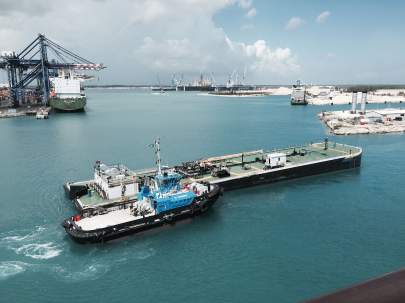
China’s worldwide efforts to isolate independent Taiwan through political and economic coercion succeeded in the Bahamas in 1997. The Bahamas terminated diplomatic ties with Taiwan and recognized Beijing’s “one-China” policy. That same year, Hong Kong’s Hutchinson Whampoa, with links to Beijing, poured $2.6 billion into the Freeport Container Port. A large port that Whampoa currently manages. Furthermore, in 2009, China’s Shandong Hi Company started construction of the Thomas Robinson stadium. Bahamian officials told the New York Times that the $30 million “gifted” stadium was in part due to ending their diplomatic ties with Taiwan.
Ever since the Bahamas' recognition of one-China, Chinese bankers and construction companies have been loaning money to the Bahamas for excessive infrastructure programs, including gambling casinos and resorts. Only the future will tell if the Bahamas will be prosperous or find themselves with underutilized infrastructure and gambling resorts that cannot generate the income to cover the loan costs. The Bahamas is not alone. It has become the CCP’s approach to prey on nation-states in need of infrastructure but lacking the financial ability to build within the budget or secure loans through the Western capital markets. China has a pattern of going to the nation-states' aid, bearing “gifts” and loans.
Arguments arise over how much of a national security threat Chinese-operated Ports and resorts in the Bahamas are. Hutchinson Port Holdings' control of 15% of the world’s shipping, managing 52 ports in 27 countries, should be of concern because of their ties to Beijing and the PLA. Proximity to the U.S. and Beigin's desire to gain commercial fishing rights off Andros Island is something that should not go unwatched. Andros Island is where the U.S. Military conducts nuclear submarine exercises. Andors is just 110 nautical miles from Freeport. It does not seem coincidental that China wants the rights to commercial fishing off Andros when the Chinese military (PLA) is known to use commercial fishing boats as part of their naval military. The U.S. nuclear submarine port at Cape Canaveral is approximately 154 nautical miles away from Freeport. Hutchison has already modernized Freeport; it may only be a matter of time before Freeport becomes a 5G smart port.
The Chinese are patient with a long-term view, waiting for the right government to come into power to do their bidding. China’s economic, political, and military strategic positioning in the Bahamas requires that the United States stay alert to China’s threefold plan and take action where needed.
